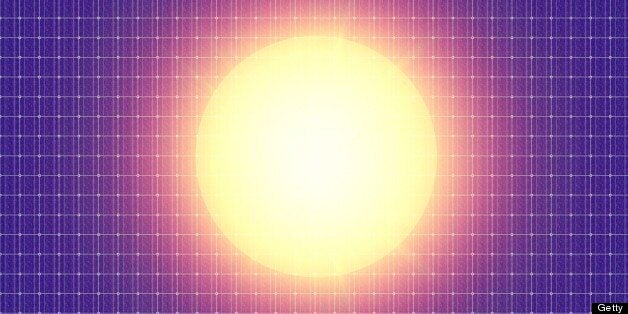
Aliens may be piloting their stars through the galaxy - and we might be able to find them.
The idea of a solar engine itself dates back to 1948, when the astronomer Fred Zwicky - who co-discovered dark matter - suggested that advanced civilisations might be able to navigate the path of the entire solar system through the galaxy.
He proposed that by using massive 'bullets' made of nuclear fuel fired at the sun, it might be possible to create explosions able to propel stars through space - taking us and the other planets with it.
Discovery.com adds that in the late 1990s the idea was taken up by the physicist Leonid Shkadov, who said that using a massive spherical mirror radiation from the Sun could be reflected back onto its surface - causing a force that would push it through space.
Such devices might be necessary if a civilisation wanted to avoid the sun passing through a cold cloud of molecular hydrogen - which can cause serious climate change - or passage close to another star.
Needless to say, building such a device is far beyond any technology we can imagine.
But that's not to say that in the enormous variety of the galaxy, or beyond, someone hasn't managed it. And if they have, they might be leaving tell-tale signs behind that mean we might be able to find them.
Now in a paper by Duncan H. Forgan at the University of Edinburgh, published in the Journal of the British Interplanetary Society, we have an idea of how to do exactly that.
Forgan proposes that a 'mega mirror' of the scale required to pilot a star would partially obscure the disk of a distant sun. And when scientists look for the transit of planets across those stars - as they do when looking for exoplanets with the Kepler space telescope - the resultant light curve would be distinctive. By looking for the right kind of light curve, it might be possible to find evidence of these megastructures - and thus aliens powering themselves across space.
In the paper Forgan goes on to model how those light curves look, and how the properties of the thruster can be identified in the data.
Alas, Forgan does admit that "even given optimistic assumptions" the chance of finding such a mirror "remains stubbornly low".
"Despite this, many exoplanet transit surveys designed for radial velocity follow-up are on the horizon, so we argue that this remains a useful serendipitous SETI technique. At worst, this technique will place an upper limit on the number of Class A stellar engines in the Solar neighbourhood; at best, this could help identify unusual transiting exoplanet systems as candidates for further investigation with other SETI methods."
However, thanks to the data of 150,000 stars in the constellation Cygnus gathered by Kepler so far, this theory is at least testable. So there is a chance - albeit a very, very small one - that we might just be able to find something extraordinary in the darkness.